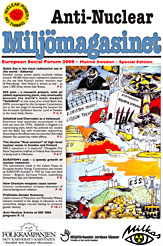Epidemiology
Fukushima children are having heart attacks
European Committee on Radiation Risk
Non cancer effects at Fukushima following internal exposure
Chris Busby, 9th September 2011
“We have recently heard that children in the Fukushima contamination area have been suffering heart attacks. This is a predictable development and is a consequence of internal contamination of heart
muscle with Caesium-137 and other radionuclides. The effects were discovered by Yuri Bandashevsky in children in the higher contamination areas around Gomel.
Bandashevsky found cardiac pathologies correlated with whole body Caesium measurements carried out by the late Prof W Nesterenko. The clinical symptom is cardiac arrhythmia which precedes heart attacks. For this reason it is recommended that all children in the contamination zone (up to 100km or areas where contamination measured) are checked by ECG regularly so that appropriate treatment may be carried out… ”
Download: C. Busby Child Heart Attacks caesiumheart Fuku 6 m
Video: httpv://www.youtube.com/watch?v=E4Kkuo-IK-A
Epidemiologist, Dr. Steven Wing, Discusses Global Radiation Exposures and Consequences with Arnie Gundersen, US
Epidemiologist, Dr. Steven Wing and nuclear engineer, Arnie Gundersen, discuss the consequences of the Fukushima radioactive fallout on Japan, the USA, and the world. What are the long-term health effects? What should the government(s) do to protect citizens?
Cancer incidence after the Chernobyl fallout in Sweden, Martin Tondel etc
Study objective: Is there any epidemiologically visible influence on the cancer incidence after the Chernobyl fallout in Sweden?
Design: A cohort study was focused on the fallout of caesium-137 in relation to cancer incidence 1988–1996.
Setting: In northern Sweden, affected by the Chernobyl accident in 1986, 450 parishes were categorised by caesium-137 deposition: ,3 (reference), 3–29, 30–39, 40–59, 60–79, and 80–120 kiloBecquerel/m2.
Participants: All people 0–60 years living in these parishes in 1986 to 1987 were identified and enrolled in a cohort of 1 143 182 persons. In the follow up 22 409 incident cancer cases were retrieved in 1988–1996. A further analysis focused on the secular trend.
Main results: Taking age and population density as confounding factors, and lung cancer incidence in 1988–1996 and total cancer incidence in 1986–1987 by municipality as proxy confounders for smoking and time trends, respectively, the adjusted relative risks for the deposition categories were 1.00 (reference ,3 kiloBecquerel/m2), 1.05, 1.03, 1.08, 1.10, and 1.21. The excess relative risk was 0.11 per 100 kiloBecquerel/m2 (95% CI 0.03 to 0.20). Considering the secular trend, directly age standardised cancer incidence rate differences per 100 000 person years between 1988 to 1996 and the reference period 1986–1987, were 30.3 (indicating a time trend in the reference category), 36.8, 42.0, 45.8, 50.1, and 56.4. No clear excess occurred for leukaemia or thyroid cancer.
Conclusions: Unless attributable to chance or remaining uncontrolled confounding, a slight exposure related increase (11 %) in total cancer incidence has occurred in northern Sweden after the Chernobyl accident.

